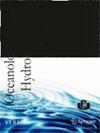Preliminary study on antimicrobial activities of skin mucus from by-catch of Elasmobranch species
IF 1
4区 环境科学与生态学
Q4 OCEANOGRAPHY
引用次数: 1
Abstract
Abstract Skates and rays, which are widely encountered in the by-catch of fisheries activities from the Sea of Marmara and banned for sale by regulation, are species that are discarded if caught. For this reason, in our study, we aimed to determine the bioactive potentials of these species, considered fishing waste, by investigating the skin secretions and microbial flora. In our study, both the skin flora and mucus contents of the discarded species Dasyatis pastinaca (Linnaeus, 1758), Myliobatis aquila (Linnaeus, 1758), and Raja clavata (Linnaeus, 1758) caught in the Sea of Marmara were investigated to determine their potential antimicrobial activities. A total of 164 bacteria were isolated from the epidermal mucus of the three batoid species. Antibacterial activity was observed from three isolated bacteria against Escherichia coli, Vancomycin-resistant Enterococcus faecium, E. faecalis, and Bacillus subtilis. Additionally, the highest antibacterial activity was observed for skin mucus of R. clavata. Mouse fibroblast cell viability was challenged with mucus secretions. M. aquila and R. clavata mucus secretions exhibited no observable change after 24 and 48 hours. The assays indicated that both the isolates and the skin mucus have potential antimicrobial activity against opportunistic pathogens.板牙纲副渔获物皮肤黏液抗菌活性的初步研究
摘要滑板和鳐鱼在马尔马拉海渔业活动的副渔获物中广泛存在,并被法规禁止出售,如果被捕获,就会被丢弃。因此,在我们的研究中,我们旨在通过调查皮肤分泌物和微生物区系来确定这些被视为捕鱼废物的物种的生物活性潜力。在我们的研究中,对马尔马拉海中捕获的废弃物种Dasytis pastinaca(林奈,1758)、Myliobatis aquila(林奈1758)和Raja clavata(林奈17158)的皮肤菌群和粘液含量进行了调查,以确定其潜在的抗菌活性。从三种蝙蝠的表皮粘液中共分离到164种细菌。从三种分离的细菌中观察到对大肠杆菌、耐万古霉素粪肠球菌、粪肠球菌和枯草芽孢杆菌的抗菌活性。此外,对棒曲霉皮肤粘液的抗菌活性最高。小鼠成纤维细胞的生存能力受到粘液分泌物的挑战。A.aquila和R.clavata粘液分泌物在24和48小时后没有表现出可观察到的变化。试验表明,分离物和皮肤粘液都对机会性病原体具有潜在的抗菌活性。
本文章由计算机程序翻译,如有差异,请以英文原文为准。
求助全文
约1分钟内获得全文
求助全文
来源期刊
CiteScore
1.70
自引率
11.10%
发文量
8
审稿时长
>12 weeks
期刊介绍:
Oceanological and Hydrobiological Studies is an international journal published by the Institute of Oceanography, University of Gdańsk in Poland. The journal has 4 issues per year and contains papers on all aspects of the marine environment and hydrobiology. All manuscripts are reviewed by editors and independent experts. Based on the referees'' recommendations, the Editor will make a decision on whether to accept a contribution. All articles are published in English. The journal is open to all matters concerning the water environment, thus providing the readers with a wide spectrum of topics in every issue.

 求助内容:
求助内容: 应助结果提醒方式:
应助结果提醒方式:


